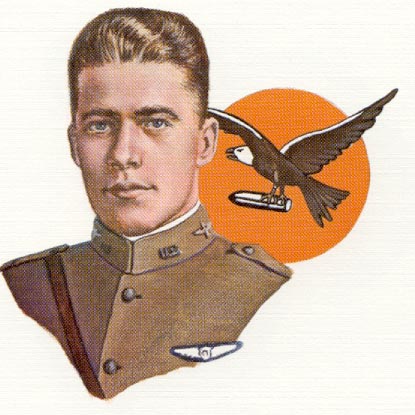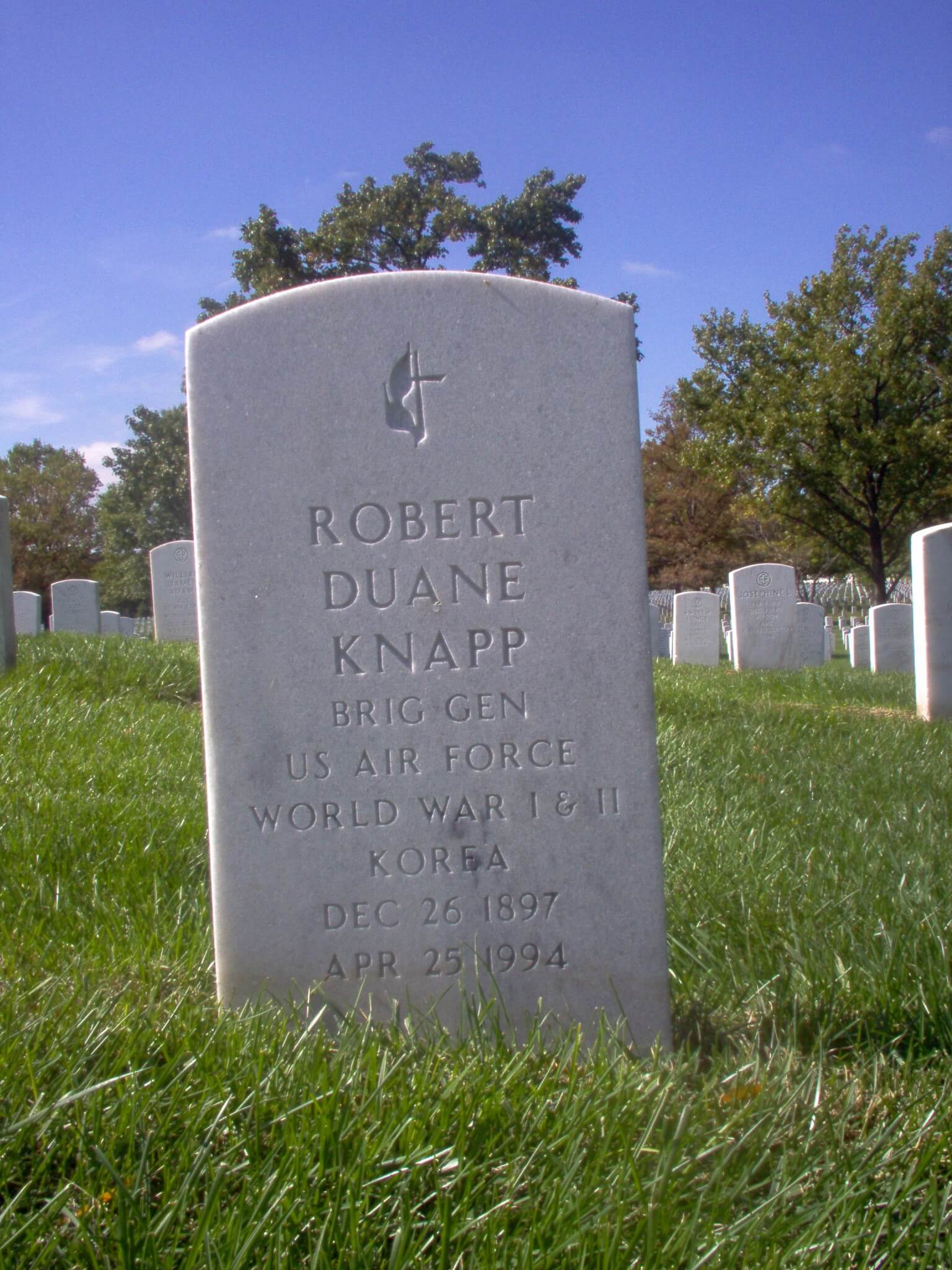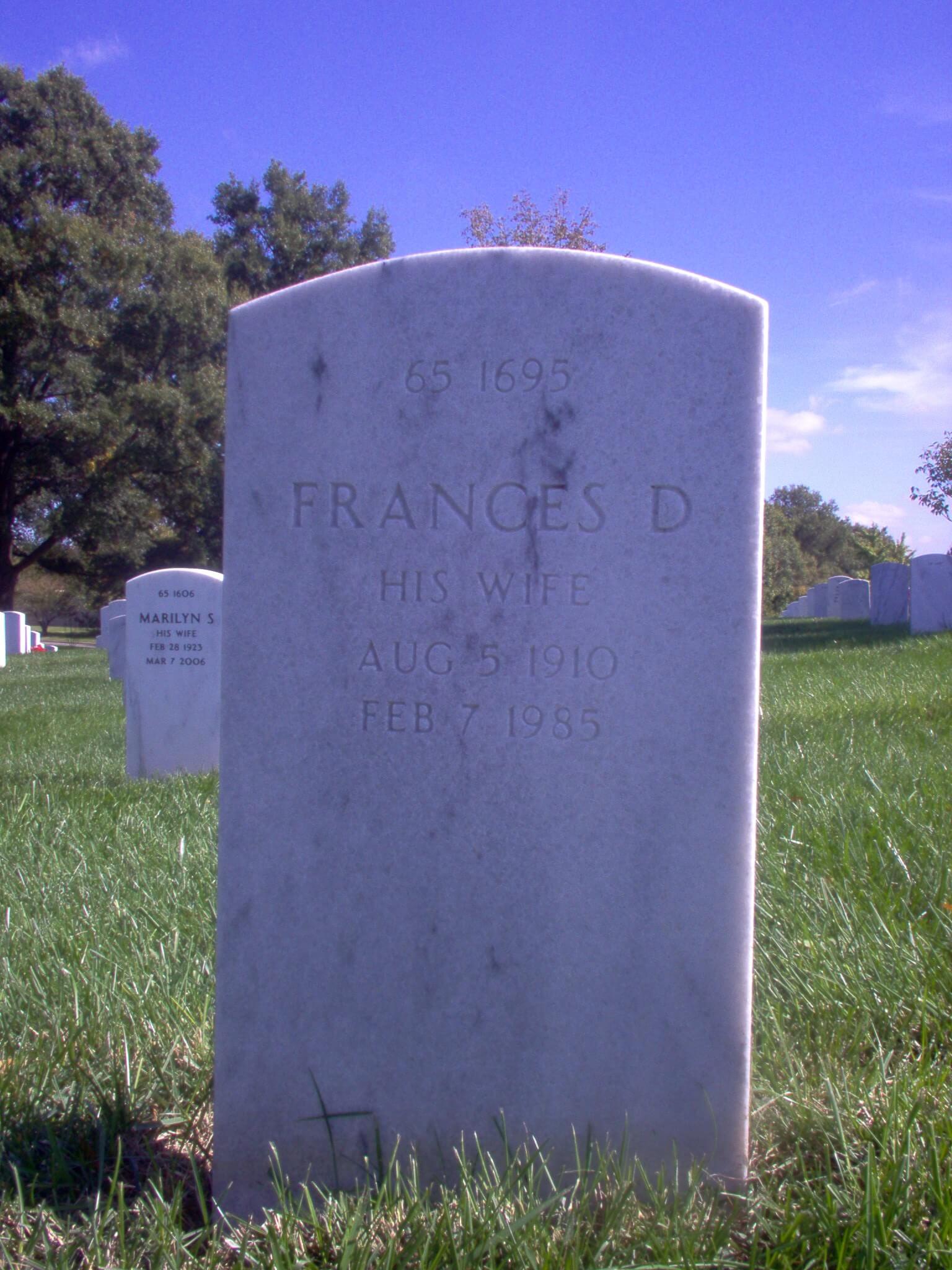Courtesy of the United States Air Force Office of History:
Holding pilot license #185, signed by Orville Wright, Brigadier General Robert D. Knapp has had a long and varied aviation career.
He was born in Moreland, Georgia, but grew up in Auburn, Alabama.
In 1917, 19-year-old Knapp was turned down for Army officer training because he was too young, but was accepted later as an aviation cadet. Cadet Knapp pinned on his wings and second lieutenant bars on 9 March 1918. However, neither he nor his unit, the 92d Bombardment Squadron, saw combat. After arriving in England in August 1918, they waited until the Armistice for propellers for their Handley Page 0/400 bombers.
After the war, Knapp had a variety of assignments. In mid-1919, he was assigned to the 96th Aero Squadron at El Paso, Texas, but was soon moved to Camp Stephen D. Little, Nogales, Arizona, as part of the 12th Observation Squadron. In 1923, he was sent to Maxwell Field, Alabama, where he flew aerial mapping missions. While there, he flew the first air mail between Montgomery and New Orleans.
In 1927, he moved to Brooks Field, Texas, and served as an instructor in the Primary Flying School at Kelly Field, Texas. He was Commandant of Cadets, Air Corps Primary Flying School at Brooks Field when he was sent to the Canal Zone in September 1931 to command the 44th Observation Squadron at France Field.
Later, he assumed command of the 7th Observation Squadron, also at France Field, and remained there until he returned to Kelly Field, as Director of Flying Training in 1934.
In 1937, while still at Kelly, he recruited ROTC graduates for aviation by leading the entire Advanced Flying School Class and their 98 aircraft on cross-country trips to universities in the southeast and the midwest.
Major Knapp attended Air Corps Tactical School in 1938, and then served as instructor for the 154th Observation Squadron of the Arkansas National Guard. In 1940, he was the executive officer for the 1st Bomber Command at Langley Field, Virginia.
After Pearl Harbor, Colonel Knapp organized six bomb groups and trained three of them before taking command of the 321st Bomb Group. He trained the 321st on the B-25 Mitchell and led the group into combat in North Africa in 1943.
He received a Silver Star for an unescorted attack on an Axis ship convoy protected by fighters. In 1944, he took command of the 57th Bomb Wing and was promoted to the rank of Brigadier General.
Before retiring in 1953, he spent 4 years as Chief, Air Force Mission to Argentina. General Knapp is a Founder Member of the Order of Daedalians and is extremely active with reunions of the B-25 units he once led. Today, he shares his home in Auburn, Alabama, with his daughter, Mrs Dorothy Spain.
Michael Robert Patterson was born in Arlington and is the son of a former officer of the US Army. So it was no wonder that sooner or later his interests drew him to American history and especially to American military history. Many of his articles can be found on renowned portals like the New York Times, Washingtonpost or Wikipedia.
Reviewed by: Michael Howard




